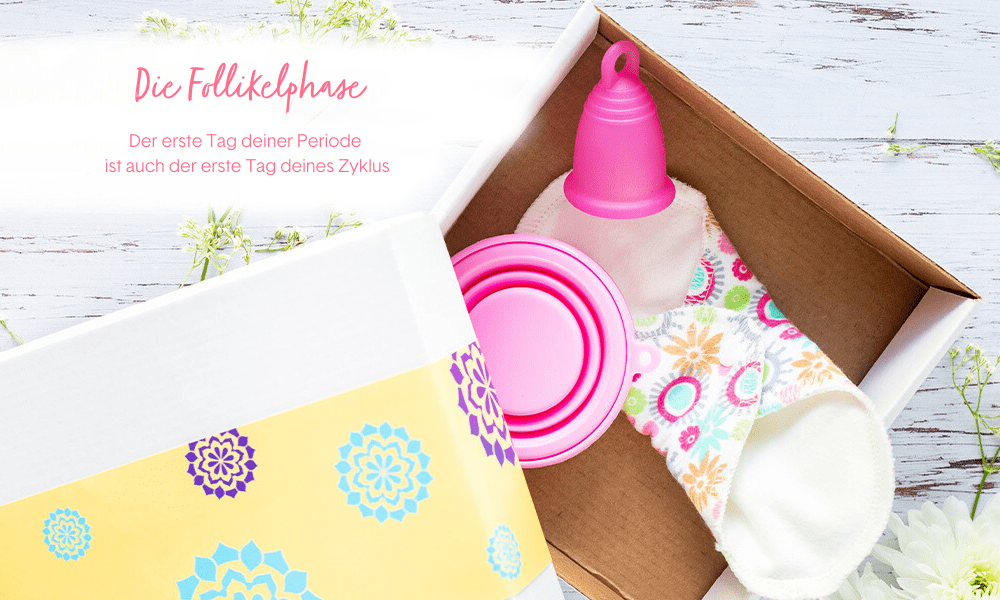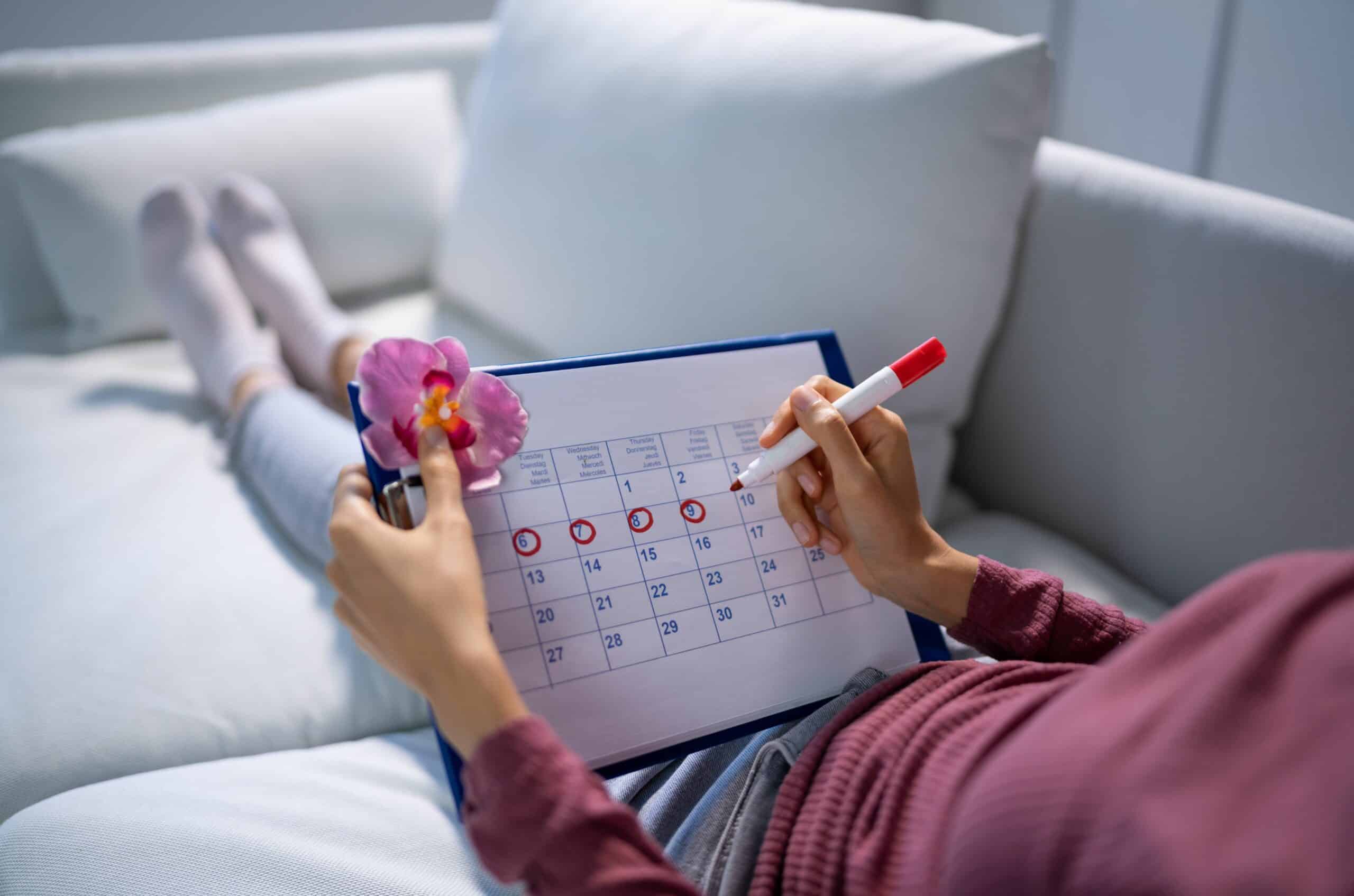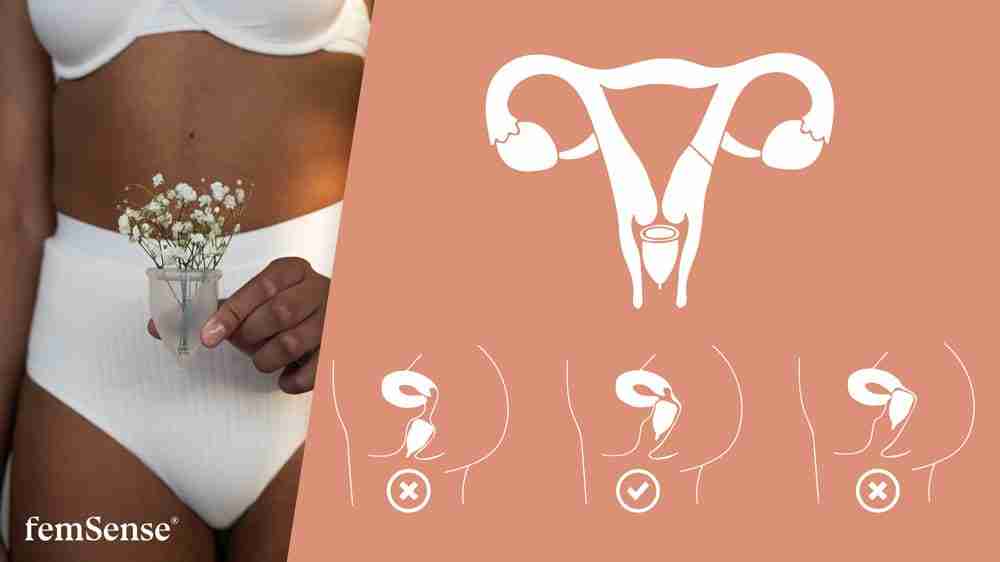
A menstrual cycle has 3 phases, the follicular phase, the ovulation phase and the luteal phase. The first day of your period is also day 1 of your cycle and the start of the follicular phase.
Did you know that the first day of your period is also day 1 of your Menstrual cycle is? The first phase of the menstrual cycle is the follicular phase and it starts with your period. There are many reasons why you Get to know the cycle better not only to predict your next period, but also to better understand what to expect during the different phases of your menstrual cycle - the good, the bad and the ugly!
A period can last between 2 and 7 days, with bleeding usually heaviest in the first 2 days. You may experience a variety of symptoms, including cramps, bloating, tender breasts and lower back pain. Symptoms can vary with each menstrual period. Some periods cause little or no discomfort, while others can be very painful. Avoiding certain foods can help with bloating and water retention. If you think that bloating makes your menstrual cramps worse, you should avoid fatty foods, caffeine, salty foods, alcohol and fizzy drinks for a few days.
While the bleeding occurs at the beginning of this phase, your ovaries are simultaneously preparing for the next ovulation. The pituitary gland releases a hormone called FSH (follicle stimulating hormone), which causes several follicles, each containing a single immature egg, to grow on the surface of the ovary. One of these follicles develops and releases an egg. The maturing follicle produces oestrogen, which increases during the follicular phase and reaches its peak shortly before ovulation. The menstrual cycle has now ended and the lining of the uterus thickens in preparation for a possible pregnancy.
You are at your most fertile towards the end of the follicular phase - and it shows! Mother Nature makes sure that you look more attractive!
This is your "Feeling Fabulous" time of the month, so get out there and show the world how awesome you are.
The first week of your cycle
At the beginning of your cycle, oestrogen levels are low, which, combined with your period, can make you tired, sensitive to pain and moody. Keep a hot water bottle and over-the-counter painkillers handy during this week of your period in case you suffer from cramps and pain. Towards the end of the week, your oestrogen levels will rise, which will improve your mood and physical performance.
The second week of your cycle
As oestrogen levels rise in week 2, your mood and energy levels should improve, making you more sociable and cheerful. You are energised, confident and feel strong. Not only do you feel more attractive, but you look it too: Subtle shifts in tissue make your face more symmetrical. Studies have shown that the higher oestrogen levels in the first half of the menstrual cycle improve spatial awareness, imagination, memory and social skills. Use this information to your advantage! Another good tip is that high oestrogen levels also trigger pain-inhibiting endorphins in the brain, so this is a good time to go to the dentist or get your legs waxed. Your testosterone levels are also elevated this week, making you more competitive and bold. As you approach ovulation, your libido increases, and when your testosterone levels rise, so does your libido. That's information your partner will definitely want to hear! On the other hand, high oestrogen levels can also sometimes lead to anxiety and stress - be prepared for this; plan some mindfulness, exercise or whatever you do to relax.
 During the follicular phase, higher oestrogen levels cause the basal body temperature to fluctuate in a lower range. The second phase of your menstrual cycle begins with ovulation and is called the luteal phase. In this phase, the higher progesterone level causes the basal body temperature to fluctuate in a higher range. The Temperature method to detect ovulation uses this tiny rise in body temperature to recognise ovulation. It is precisely this tiny rise in temperature that femSense can recognise and therefore measure and confirm ovulation.
During the follicular phase, higher oestrogen levels cause the basal body temperature to fluctuate in a lower range. The second phase of your menstrual cycle begins with ovulation and is called the luteal phase. In this phase, the higher progesterone level causes the basal body temperature to fluctuate in a higher range. The Temperature method to detect ovulation uses this tiny rise in body temperature to recognise ovulation. It is precisely this tiny rise in temperature that femSense can recognise and therefore measure and confirm ovulation.
Sources:





Leave a Reply